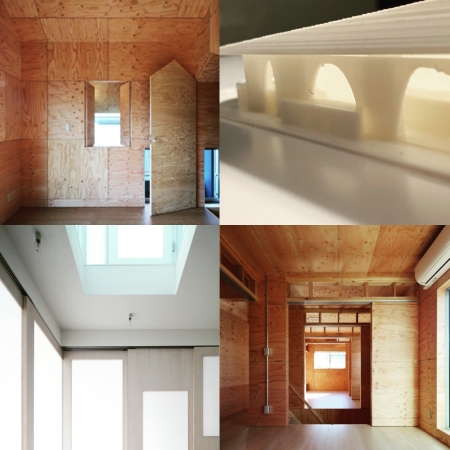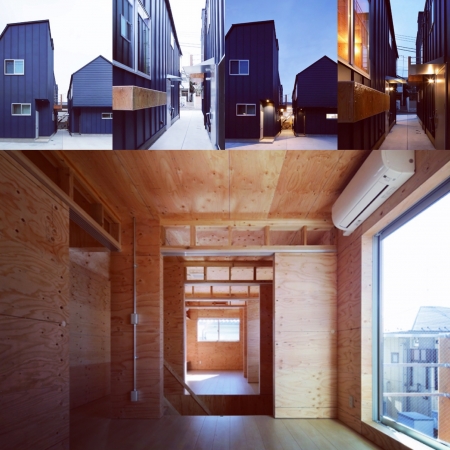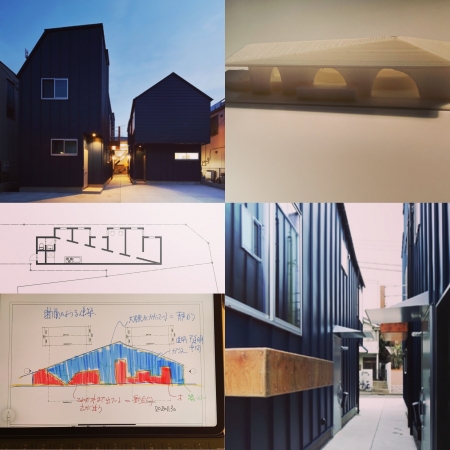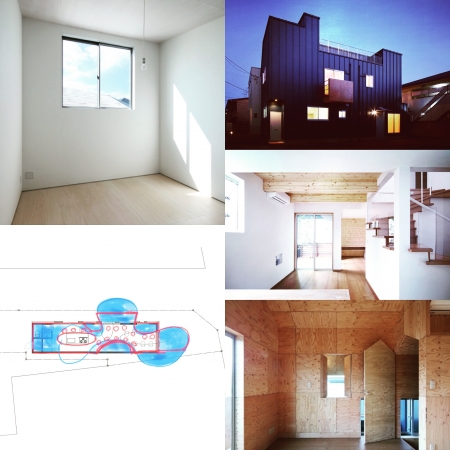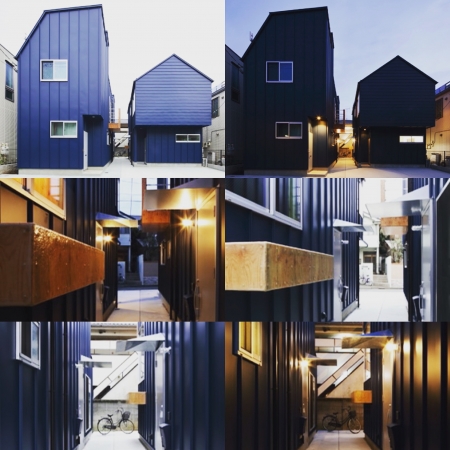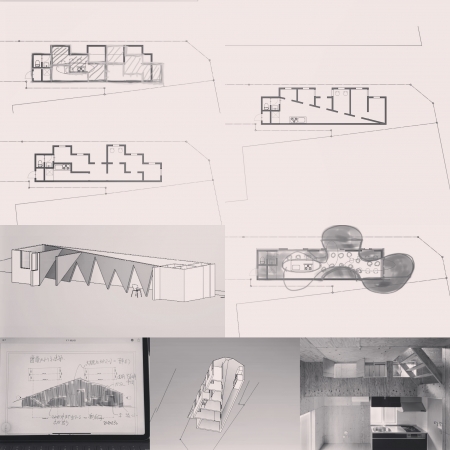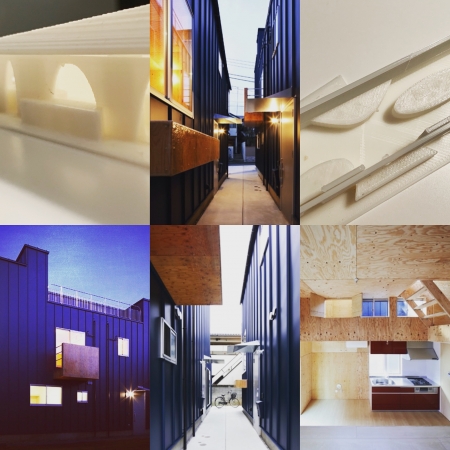片面だけの壁
極小さな建築、周りは囲いに迫られて、建築自体が何も見えないかもしれない。周りから何も見えなければ、周りから存在しないのと同じである。ならば、すでにその建築は自律することが決まっている、自律せざるを得ない。
周りから見えないのだから、何をしても許されるかもしれない。ただ内部においての都合だけを考えればよいから不都合はない。
細長い敷地なので、建築の平面形状も細長くなる。敷地の形状と同じ平面形状になるので、それだけで周りの環境のコンテクストには準拠しているとして、あとは許されるだろう。
敷地の中で1枚の壁を考える。その壁は当然周りからは見えない。その壁は外と内を隔てる役目があるが外面は見えないので、存在は内側からのみわかる。片面だけ考えれば壁が成立し、その壁が連続すれば建築という領域ができてしまうことが面白いと思った。
"One-sided wall"
Very small architecture, the surroundings are pressed by the enclosure, and the architecture itself may not be visible. If nothing can be seen from the surroundings, it is the same as if it does not exist from the surroundings. If so, the architecture has already been decided to be autonomous, and there is no choice but to be autonomous.
You may be allowed to do anything because you cannot see it from your surroundings. There is no inconvenience because it is only necessary to consider the internal convenience.
Since the site is long and narrow, the plan shape of the building is also elongated. Since it has the same flat shape as the site, it will be allowed as it conforms to the context of the surrounding environment.
Consider a wall in the site. Of course, the wall cannot be seen from the surroundings. The wall serves to separate the outside from the inside, but the outside is invisible, so its existence can only be seen from the inside. I thought it was interesting that a wall would be formed if only one side was considered, and if the walls were continuous, an area of architecture would be created.

